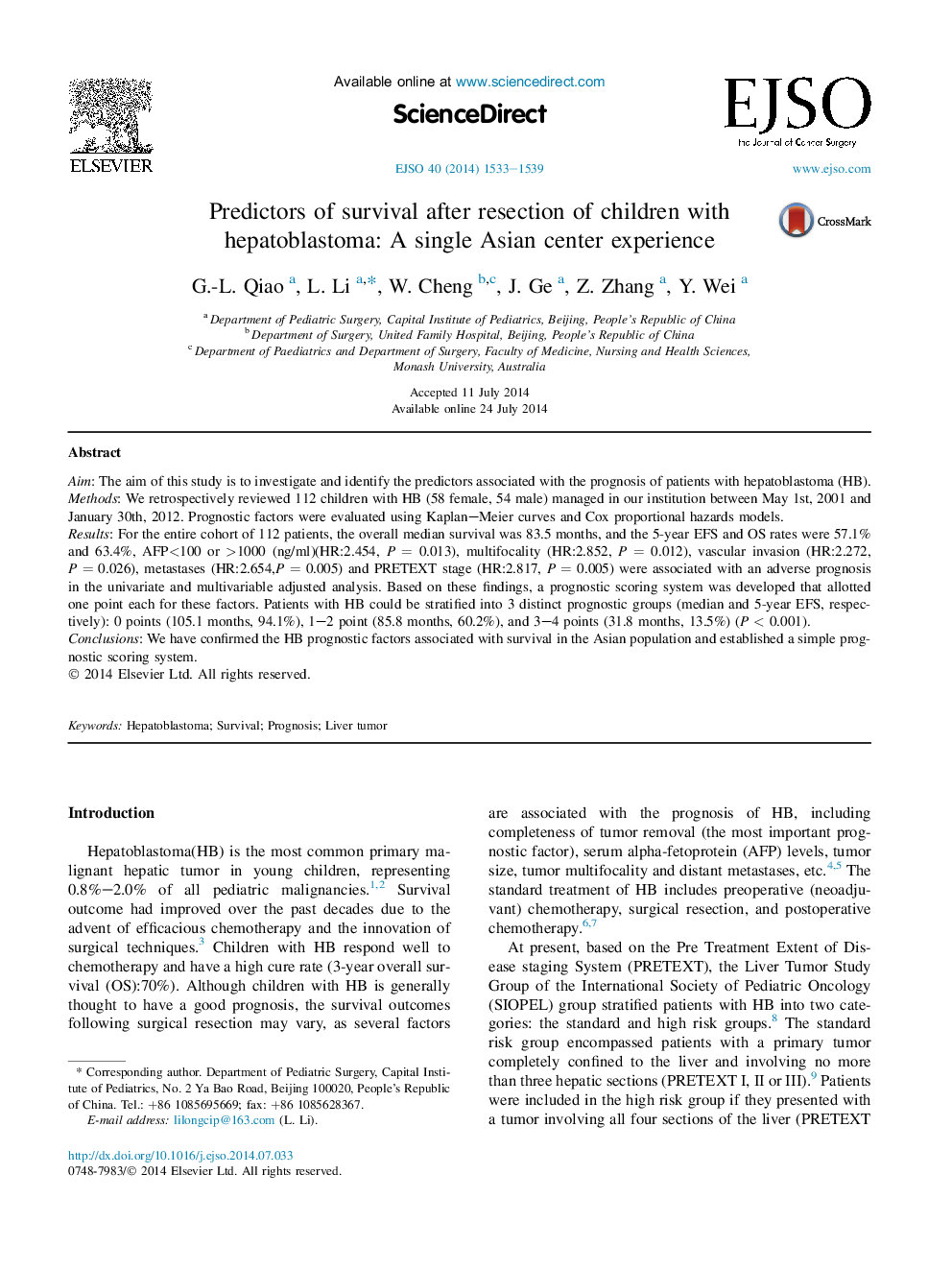| کد مقاله | کد نشریه | سال انتشار | مقاله انگلیسی | نسخه تمام متن |
|---|---|---|---|---|
| 3984999 | 1601382 | 2014 | 7 صفحه PDF | دانلود رایگان |
AimThe aim of this study is to investigate and identify the predictors associated with the prognosis of patients with hepatoblastoma (HB).MethodsWe retrospectively reviewed 112 children with HB (58 female, 54 male) managed in our institution between May 1st, 2001 and January 30th, 2012. Prognostic factors were evaluated using Kaplan–Meier curves and Cox proportional hazards models.ResultsFor the entire cohort of 112 patients, the overall median survival was 83.5 months, and the 5-year EFS and OS rates were 57.1% and 63.4%, AFP<100 or >1000 (ng/ml)(HR:2.454, P = 0.013), multifocality (HR:2.852, P = 0.012), vascular invasion (HR:2.272, P = 0.026), metastases (HR:2.654,P = 0.005) and PRETEXT stage (HR:2.817, P = 0.005) were associated with an adverse prognosis in the univariate and multivariable adjusted analysis. Based on these findings, a prognostic scoring system was developed that allotted one point each for these factors. Patients with HB could be stratified into 3 distinct prognostic groups (median and 5-year EFS, respectively): 0 points (105.1 months, 94.1%), 1–2 point (85.8 months, 60.2%), and 3–4 points (31.8 months, 13.5%) (P < 0.001).ConclusionsWe have confirmed the HB prognostic factors associated with survival in the Asian population and established a simple prognostic scoring system.
Journal: European Journal of Surgical Oncology (EJSO) - Volume 40, Issue 11, November 2014, Pages 1533–1539
